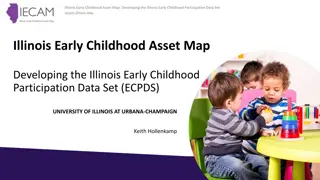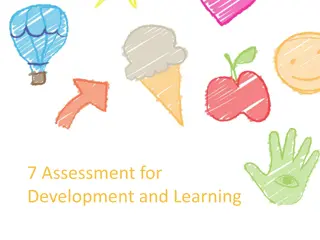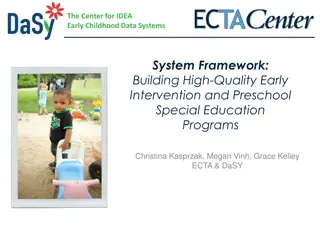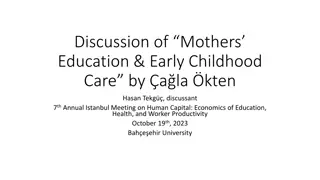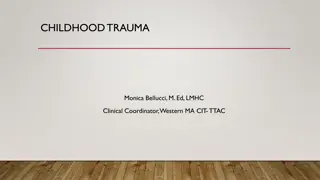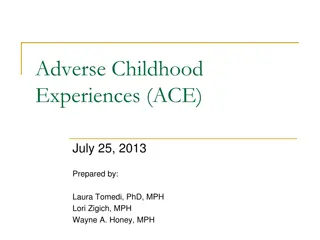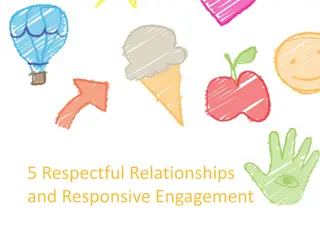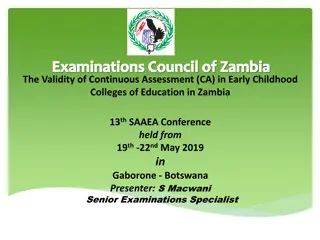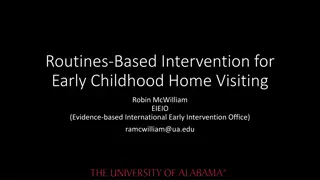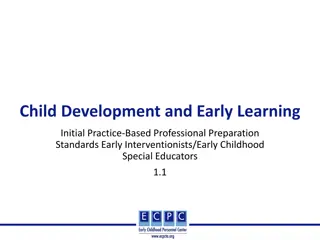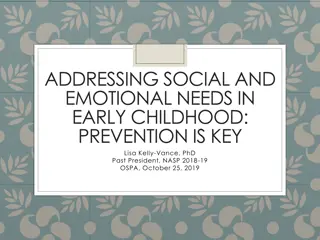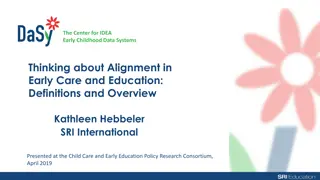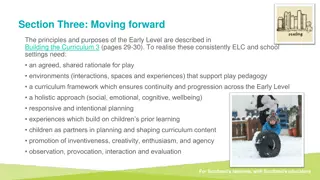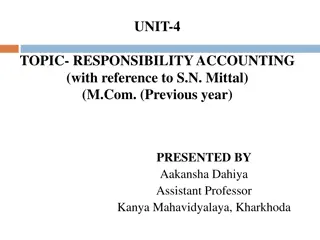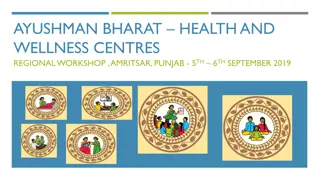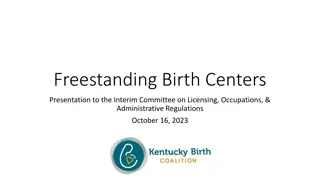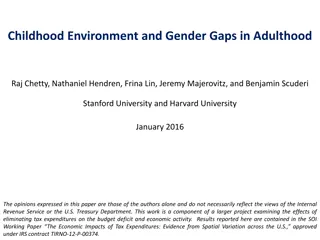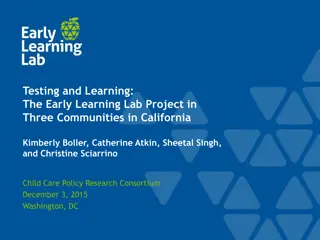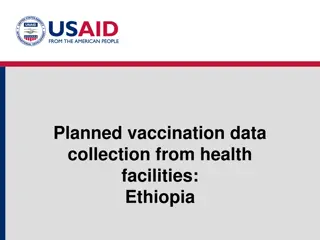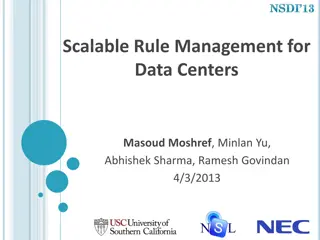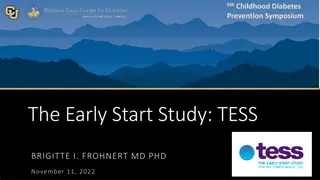Understanding DaSy Center's Needs Assessment for Early Childhood Data Systems
Explore how the DaSy Center conducted a needs assessment to support states in improving early intervention and special education data systems. Learn about the purposes, key findings, and uses of needs assessment in enhancing technical assistance efforts for effective program evaluation.
Download Presentation

Please find below an Image/Link to download the presentation.
The content on the website is provided AS IS for your information and personal use only. It may not be sold, licensed, or shared on other websites without obtaining consent from the author. Download presentation by click this link. If you encounter any issues during the download, it is possible that the publisher has removed the file from their server.
E N D
Presentation Transcript
The Center for IDEA Early Childhood Data Systems Using Needs Assessments to Identify and Evaluate Technical Assistance: Results of a National Survey about Statewide Data Systems for IDEA Early Intervention and Early Childhood Special Education Missy Cochenour, Donna Spiker, Kathleen Hebbeler, Martha Diefendorf, Taletha Derrington,& Lynne Kahn American Evaluation Association Denver, CO ~ October 2014
In this presentation, we will. Describe a needs assessment done by a national TA center Present some of the key findings Identify uses of needs assessment to support effective TA and evaluation efforts 2
What is technical assistance and why does a needs assessment support it? Technical assistance is expertise provided in response to a client's defined problem or need in order to increase their capacity. In the early childhood field, TA centers have historically assisted states in improving their programs, services, and child and family outcomes. TA centers typically conduct a needs assessment to identify client needs and to plan and prioritize their TA activities. 3
What is DaSy? Center for IDEA Early Childhood Data Systems A 5-year OSEP-funded TA Center to assist states with improving IDEA EI and ECSE data by: Building better data systems Coordinating data systems across EC programs Connecting to longitudinal data systems Building the capacity of states to use data 4
Who is DaSy? SRI International Frank Porter Graham (FPG) Child Development Institute Applied Engineering Management (AEM) Westat Center for Technology in Education (CTE) at Johns Hopkins University (JHU) Cadre of national experts 5
What were the purposes of the DaSy Center s needs assessment? What we are funded to do: Support developing or enhancing Part C and 619 data systems Assist Part C/619 participation in integrated EC data systems Assist Part C/619 participation in state longitudinal data systems What we wanted to know to guide our TA: Current status of Part C and 619 state data systems, Priorities for improving data systems Areas where states would like TA 7
What methods were used? Online needs assessment developed by DaSy workgroup Development coordinated with other early childhood surveys from: Infant Toddlers Coordinators Association (ITCA) Early Childhood Data Collaborative (ECDC) Sent to state Part C and 619 coordinators 8
Who were the respondents? Sent to all states and jurisdictions Report focuses on information reported by 50 states, DC, and Puerto Rico Completed with data managers and others identified by coordinators 9
What kinds of questions were asked? Three general status categories of Part C and 619 data systems: Data systems and data elements Linkages between different state data systems Data system administration and use of data Note: Slightly different versions for Part C and 619 based on program differences 10
What kinds of questions were asked? 10 critical areas about status of state data systems: 1. Child -level data systems 2. Child Data Elements Linked or in 1 System 3. Workforce-Level Data Systems 4. Child Data Linked to Workforce Data 5. Unique Child ID 6. Same Unique Child ID in Part C and Part B 619 7. Part C Child Data Linked to Part B 619 Data 8. Child Data Linked to Other Early Childhood Education (ECE) Data 9. Child Data Linked to K-12 General Education Data 10. Data Governance Body 11
What kinds of questions were asked? (cont.) 11.Current state priorities for their data system development or enhancement 12.State priorities for TA that could be provided by DaSy Center 12
What were the response rates? We had an excellent response rate: For Part C 94% (n= 49) For 619 96% (n= 50) Reflects EI and ECSE commitment to data! 13
Focus of questions and terminology Different kinds of state level data systems For example: Workforce data about providers may be in multiple state databases. School enrollment data may be in a program database. Clarity of terminology is important What do we mean by program or program-level data? In EC, program typically means a center where children go. We used a broad definition. 14
Some of the Key Findings from the DaSy Needs Assessment 15
State of the States Data Systems EI ECSE Child 94% 0% 96% 0% Program 29% 65% 40% 56% Workforce EI Provider 65% 29% Workforce Special Ed Teacher 83% 14% Workforce Related Services 71% 25% Workforce General Ed Teacher 71% 25% 0% 50% 100% 0% 50% 100% No Yes Missing 16
Only about one-third of states have linked data across Part C and 619. Same system, 15% C and B did not agree, 23% Linked systems, 14% Not linked, 48% 17
Few states have linkages with other EC data for Part C, and almost half have linkages with state preK for 619. Types of other EC data Part C 619 12% 46% State pre-K 6% 22% Head Start 2% 10% Early Head Start 6% 8% Child care 8% 8% Home visiting 18
State of the States IDEA EC Data Systems: On the Web http://dasycenter.org/state_of_states/index.html 19
Using Results of DaSy Needs Assessment to Inform TA 22
Using the NA Results What Will DaSy Do? Assist states in data system development Other EC Program Data Other EC Program Data K-12 Quality EI/ECSE Data Longitudinal Data System Other EC Program Data EC Integrated Data System Other EC Program Data
States Priority Areas for TA Area of State Priority EI ECSE Child and family outcomes 67% 63% Linkages within EI or within ECSE data elements 58% 56% Data use (e.g., analysis, program improvement) 54% 52% Data sharing permissions and/or privacy issues 48% 67% APR indicators/618 data Including EI/ECSE in broader state data system planning 48% 63% 48% 52% Data quality, verification, audit systems 46% 50% Linkages with social services or health data 27% 50% 24
Using Needs Assessment to Inform TA Developed working groups in the high need area (e.g. privacy and confidentiality & data linkages) Created a framework that covers the core data system components for states Individual TA to states in particular high-need areas 25
Baseline Data YEAR 1 YEAR 2 YEAR 3 26
TA provided from Needs Assessment Results were used to create teams of experts to address needs across states in core areas identified from the needs assessment Data linkages Data privacy and confidentiality Families SSIP (related to data quality and data use) Child Outcomes Training Modules (supporting data quality) DaSy Framework to focus on core components of developing or enhancing data systems to use high-quality data for informed decisions 27
Questions To get copy of report: www.dasycenter.com 28
Keeping up to date with DaSy Visit DaSy web site: http://dasycenter.org/ Follow DaSy on Twitter : @DaSyCenter Like DaSy on Facebook: DaSy Center 29
The contents of this presentation were developed under a grant from the U.S. Department of Education, #H373Z120002. However, those contents do not necessarily represent the policy of the U.S. Department of Education, and you should not assume endorsement by the Federal Government. Project Officers, Meredith Miceli and Richelle Davis. 30



